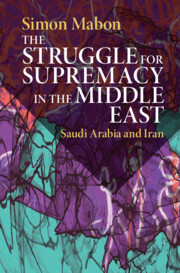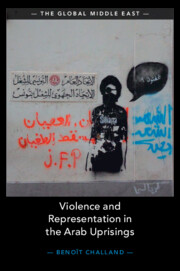62 results
21 - The Mongols and the Arab Middle East
- from Volume I Part 4 - External Histories
-
-
- Book:
- The Cambridge History of the Mongol Empire
- Published online:
- 01 January 2024
- Print publication:
- 17 August 2023, pp 798-826
-
- Chapter
- Export citation
Concurrent wasting and stunting among marginalised children in Sana’a city, Yemen: a cross-sectional study
-
- Journal:
- Journal of Nutritional Science / Volume 12 / 2023
- Published online by Cambridge University Press:
- 04 August 2023, e91
-
- Article
-
- You have access
- Open access
- HTML
- Export citation
2 - Intervention by Invitation
-
-
- Book:
- Armed Intervention and Consent
- Published online:
- 22 June 2023
- Print publication:
- 06 July 2023, pp 101-178
-
- Chapter
-
- You have access
- Open access
- HTML
- Export citation
3 - Invitations to Intervene after the Cold War
-
-
- Book:
- Armed Intervention and Consent
- Published online:
- 22 June 2023
- Print publication:
- 06 July 2023, pp 179-318
-
- Chapter
-
- You have access
- Open access
- HTML
- Export citation
7 - Cultural Exchange and Religious Guidance along the Shores of the Arabian Sea
- from Part ii - South Asia: Identity and Culture in British and Independent India
-
-
- Book:
- Jewish Communities in Modern Asia
- Published online:
- 11 August 2023
- Print publication:
- 15 June 2023, pp 127-142
-
- Chapter
- Export citation
7 - Yemen
-
- Book:
- The Struggle for Supremacy in the Middle East
- Published online:
- 09 March 2023
- Print publication:
- 16 March 2023, pp 215-249
-
- Chapter
- Export citation

The Struggle for Supremacy in the Middle East
- Saudi Arabia and Iran
-
- Published online:
- 09 March 2023
- Print publication:
- 16 March 2023
5 - Two Tales of Decentralization
- from Part III - Embattled Revolutionary Legacies (2014–2021)
-
- Book:
- Violence and Representation in the Arab Uprisings
- Published online:
- 02 February 2023
- Print publication:
- 09 February 2023, pp 283-322
-
- Chapter
- Export citation

Violence and Representation in the Arab Uprisings
-
- Published online:
- 02 February 2023
- Print publication:
- 09 February 2023
18 - Decentralization in Yemen
- from Part IV - Decentralization, Conflict, and State Fragmentation
-
-
- Book:
- Federalism and Decentralization in the Contemporary Middle East and North Africa
- Published online:
- 15 January 2023
- Print publication:
- 05 January 2023, pp 365-384
-
- Chapter
- Export citation
19 - Federalism and Decentralization in the MENA Region
- from Part V - Conclusions
-
-
- Book:
- Federalism and Decentralization in the Contemporary Middle East and North Africa
- Published online:
- 15 January 2023
- Print publication:
- 05 January 2023, pp 387-416
-
- Chapter
- Export citation
The derivatives of Barth's Law in the light of modern Arabic dialects
-
- Journal:
- Bulletin of the School of Oriental and African Studies / Volume 85 / Issue 3 / October 2022
- Published online by Cambridge University Press:
- 28 February 2023, pp. 333-353
- Print publication:
- October 2022
-
- Article
-
- You have access
- Open access
- HTML
- Export citation
7 - Killing the Individual Human Being via Drones
-
- Book:
- The Humanisation of Global Politics
- Published online:
- 25 August 2022
- Print publication:
- 01 September 2022, pp 160-202
-
- Chapter
- Export citation
Prevalence and surveillance of tuberculosis in Yemen from 2006 to 2018
-
- Journal:
- Epidemiology & Infection / Volume 150 / 2022
- Published online by Cambridge University Press:
- 20 July 2022, e146
-
- Article
-
- You have access
- Open access
- HTML
- Export citation
5 - State Responsibility and Liability
-
- Book:
- German Practice in International Law
- Published online:
- 19 May 2022
- Print publication:
- 09 June 2022, pp 155-173
-
- Chapter
- Export citation
6 - From Revolution to State Collapse
-
- Book:
- The Age of Counter-Revolution
- Published online:
- 06 May 2022
- Print publication:
- 26 May 2022, pp 186-217
-
- Chapter
- Export citation
3 - The Revolutionary Situations
-
- Book:
- The Age of Counter-Revolution
- Published online:
- 06 May 2022
- Print publication:
- 26 May 2022, pp 66-102
-
- Chapter
- Export citation
3 - The Mamluk Sultanate from a Global Perspective
-
- Book:
- The Mamluk Sultanate
- Published online:
- 05 May 2022
- Print publication:
- 26 May 2022, pp 80-128
-
- Chapter
- Export citation
2 - Exit from Authoritarianism
-
- Book:
- The Arab Spring Abroad
- Published online:
- 14 April 2022
- Print publication:
- 21 April 2022, pp 44-70
-
- Chapter
-
- You have access
- Open access
- HTML
- Export citation
4 - Pathways of Failure
-
- Book:
- The 'Fall' of the Arab Spring
- Published online:
- 31 March 2022
- Print publication:
- 07 April 2022, pp 113-159
-
- Chapter
- Export citation



